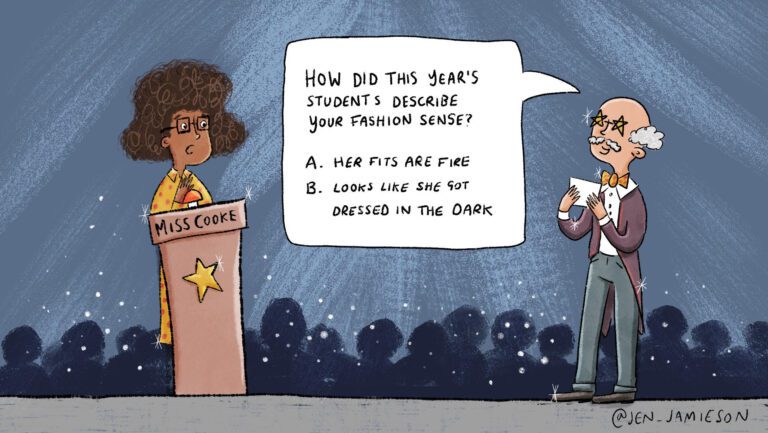If you are over 40, chances are that when you began teaching it was out of the question for teachers to wear jeans—not even on Fridays. Teacher professional dress code has a long history in our country. A 1923 teaching contract from Ohio says that female teachers were required to wear “at least two petticoats” and were not allowed to “dress in bright colors or dye their hair.”


Even though times have changed, many school dress codes haven’t. In metro Atlanta last year, one school moved to ban capri pants. Last spring in Florida, a school district proposed a dress code that would force teachers to wear “collared button-ups or polo shirts in a color of their school’s choosing.” To some, especially veteran educators, these guidelines may seem reasonable. However, to others they are an outdated, unnecessary policy of the past.
Enter the millennial.
With the influx of tech-savvy millennials into the workplace, professional culture in the United States has changed drastically. According to the Pew Research Center, millennials make up the majority of the American workforce. As a cohort, they seek meaningful work that helps them maintain a healthy life-work balance. Millennials care about connection and meaning, and those core values are at the center of what they look for at work. As more and more millennials become teachers and administrators, their perspective should be considered when thinking about evolving professional school dress codes. Here are some ways to think about professional dress code through the eyes of a millennial.
1. “Professional” can mean a lot of things.
You’ve heard the term over and over again, but what does “professional dress” really mean? To the teacher with the longest tenure at your school, it could mean khaki pants, dress shirts, nylons, and heels. This term is more complex for millennials who unapologetically embrace their multifaceted identities. For example, many consider large hoop earrings to be unprofessional and inappropriate for the workplace. For many Black and Latina women, however, hoop earrings are an essential part of culture and history. When you ask someone to dress professionally, you might also be unwittingly asking them to leave their identity at the door.
What we wear is part of how we express identity. By creating rigid guidelines for expression, schools risk silencing the diversity they claim to appreciate. A key part to retaining great teachers and building a positive staff culture is trusting them and embracing their individuality.
2. Dress codes unfairly target women.
Times have changed, but the targets of dress codes have not. Take a look at the dress code in your school or district employee handbook. It very likely is focused on the female body and articulates expectations for neckline and skirt-length appropriateness. There are few gendered guidelines directed solely toward men. Professional dress code needs to be evaluated for gender equity.
Rather than using language that targets a specific gender, dress codes can use broader language. For instance, instead of, “Shirts must not have a low neckline,” the professional dress code could read, “Staff should use their best discretion to wear clothing that is not a distraction to other staff and students.” This language treats staff as professionals and shows they are trusted.
3. Comfort is essential.
The more physically comfortable a person is, the better their job performance will be. We want teachers who are active and engaged with their students. Great teaching doesn’t happen standing still in front of a podium. It happens when teachers physically engage in the lesson, constantly moving around the room. This might mean a science teacher acting out the relationship between electrons and the nucleus of an atom. Or maybe it’s the English teacher who takes their students outside for silent reading time. Neither of these activities would be easy in pantyhose and heels.
4. Adults want to dress for the jobs they have.
It’s time for some real talk. The school day does not happen at your desk as you sip a cup of tea. It happens when you help a kid who wet his pants clean himself up. In my job, I clean up vomit, sprint down the street, and pick up trash in the hallway regularly. Wearing a knee-length skirt and heels would not have made those experiences more comfortable for me—or efficient. School professionals need the freedom to dress for the work that we actually do, not what others imagine us doing.
As an administrator, you must engage a wide variety of perspectives when it comes to creating guidelines for a relaxed dress code. As you work to navigate this issue, keep in mind that happy teachers make for happy students. Your leadership can be the catalyst for an important cultural shift. As a result, this shift will help create a better school.
Join the great conversations going on about school leadership in our Facebook groups at Principal Life and High School Principal Life.
Plus check out 9 Teacher Motivation Killers — Is Your School Guilty?

